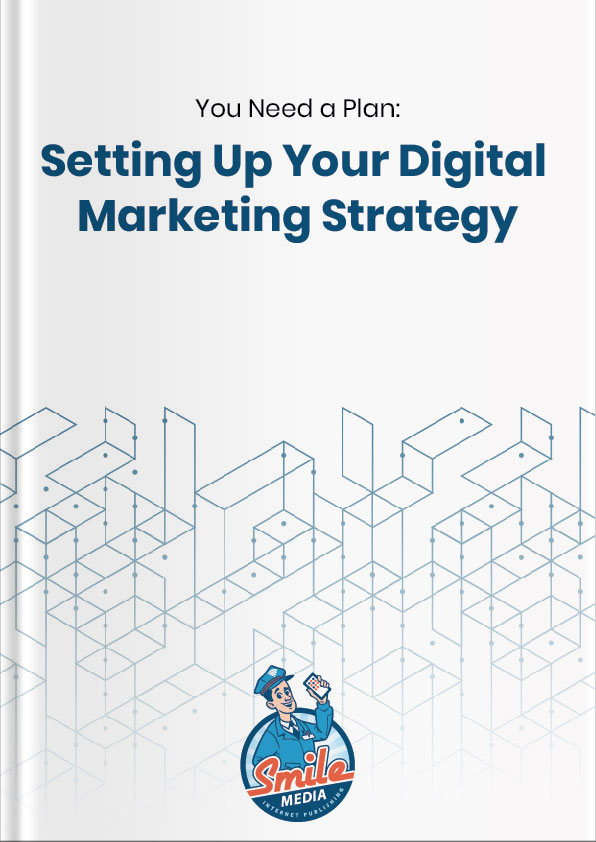Are you thinking of redesigning your outdated website? It's important to ensure you get the best results from your redesign effort. Here are some tips to help you get started.
First, it's important to know when to have a website makeover. Some signs that your website needs an overhaul include slow loading times, a lack of mobile responsiveness, outdated design elements, and a high bounce rate. Here's a detailed overview of what you need to look out for:
Your website's navigation is challenging for users to navigate through
In today's digital age, a business's website is often the first point of contact that potential customers have with the company. As such, having a well-designed and user-friendly website is essential for establishing a strong online presence and making a positive first impression.
However, with rapidly changing technology and design trends, it's important to periodically review and update your website to ensure that it continues to meet your business's needs and remains effective in engaging your audience.
Your website has an excess of content that may be difficult for new users to comprehend
One of the most obvious signs that your website is outdated is a high bounce rate, which occurs when visitors leave your website after only viewing one page. This can be an indication that your website is not engaging or user-friendly, and that visitors are having difficulty finding the information they need.
It’s important to focus on creating compelling and relevant content that engages your target audience and effectively communicates your brand message.
Absence of apparent calls-to-action on your website
If you've determined that your website needs a redesign, there are a number of steps you can take to ensure that your new site is well-designed, user-friendly, and optimized for search engines. One key consideration is to make sure that your website's navigation is clear and easy to use, with an intuitive menu structure that allows visitors to quickly find the information they need.
Additionally, outdated design elements, such as old-fashioned graphics, a cluttered layout, or an unappealing color scheme, can make your website appear unprofessional and uninviting.
Your website contains out-of-date or inaccurate content
It's important to take the time to review all of the content on your current site and identify any outdated or inaccurate information that needs to be updated or removed.
You should also look for opportunities to expand your content offerings, such as by adding a blog or creating new landing pages for different products or services.
When creating new content, it's important to focus on your target audience and their needs, interests, and pain points, and to use language and terminology that resonates with them.
Search results on your website do not deliver relevant information
One of the key factors that can make or break the effectiveness of your website is the relevance of its search results. If your website's search function is not delivering accurate and relevant results, visitors may quickly become frustrated and give up on finding the information they need.
To improve the effectiveness of your website's search function, it's important to use relevant keywords and to ensure that your website's content is properly indexed by search engines.
Your website pages take too long to load
In today's fast-paced digital world, website visitors expect fast and seamless user experiences, and slow page load times can quickly turn them off. If your website is taking too long to load, you may be losing potential customers and damaging your search engine rankings.
You need a developer's assistance every time you want to make changes to your website
If you're considering a website redesign, it's important to think about the ongoing maintenance and upkeep that will be required to keep your site up-to-date and functioning smoothly. Depending on the complexity of your site, you may need to hire a developer or a team of developers to help you make changes and updates over time.
To avoid getting stuck with a site that's difficult to manage or that requires constant developer support, it's important to choose a platform or CMS that's user-friendly and easy to manage, even for those without technical expertise.
Additionally, you should work with your developer to create a clear set of guidelines and standards for your website's design and functionality, to ensure that future updates are consistent and in line with your overall brand and messaging. By taking these steps, you can ensure that your website remains easy to manage and update, and that it continues to meet the needs of your audience over time.
Your website has too many inaccessible PDFs or content
If your website contains too many PDFs or other content that's not easily accessible or searchable, you may be limiting its effectiveness and alienating potential visitors. To ensure that your website is as user-friendly and accessible as possible, it's important to make sure that all content is presented in a clear and easily digestible format, and that it's searchable and indexable by search engines.
Your website design does not allow you to implement best SEO practices
When it comes to website design, it's important to keep in mind the importance of search engine optimization (SEO) and its impact on your site's visibility and traffic.
If your website design is not optimized for SEO, you may be missing out on valuable traffic and potential customers.
To ensure that your site is well-optimized for search engines, you should focus on factors such as site speed, mobile responsiveness, content quality, and proper use of HTML tags and meta descriptions.
Your website is not optimized for viewing on mobile devices.
In today's digital age, it's more important than ever to ensure that your website is optimized for mobile devices. With more and more people accessing the internet on smartphones and tablets, having a website that's optimized for mobile devices can make all the difference in terms of user experience and engagement.
To ensure that your website is well-optimized for mobile devices, you should focus on factors such as site speed, mobile responsiveness, and the use of mobile-friendly design elements such as large buttons and easy-to-read text.











